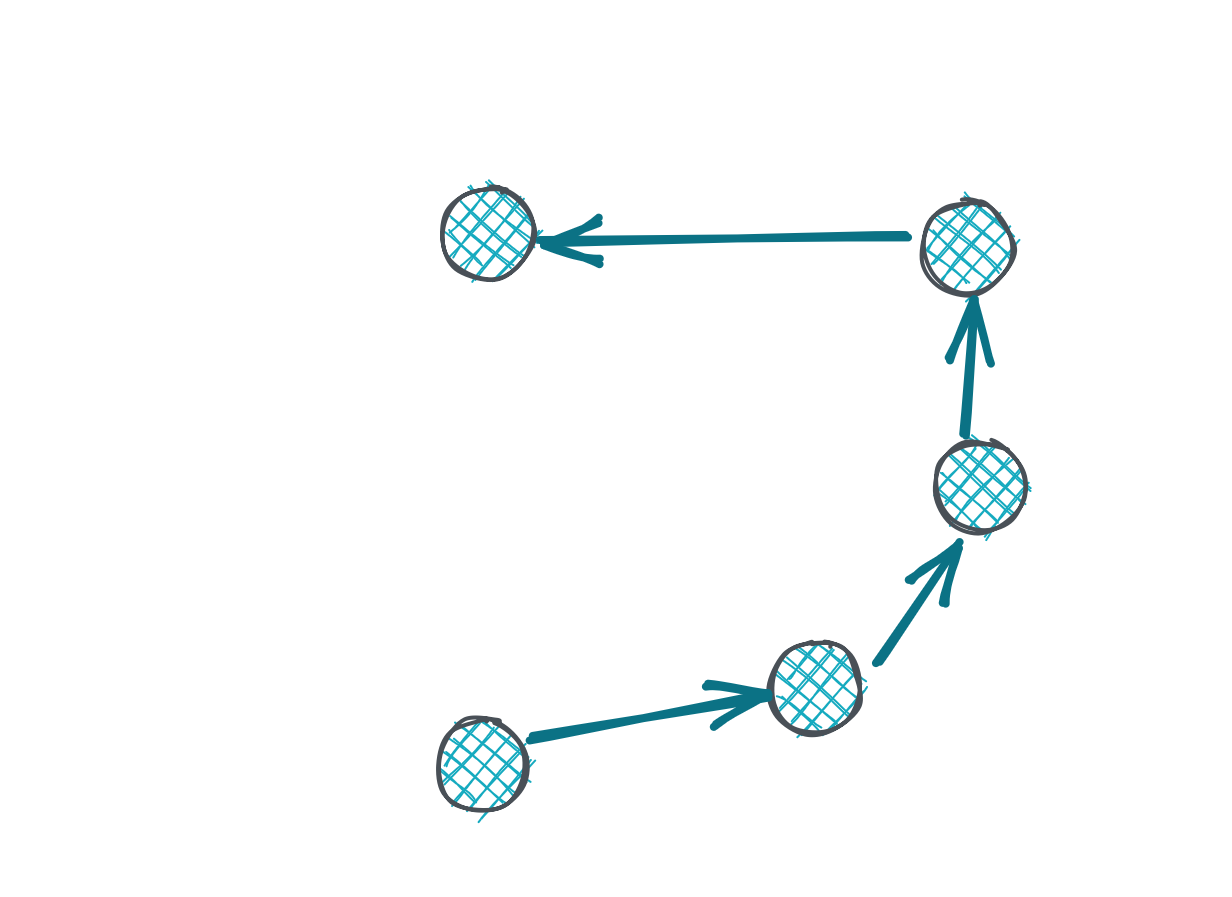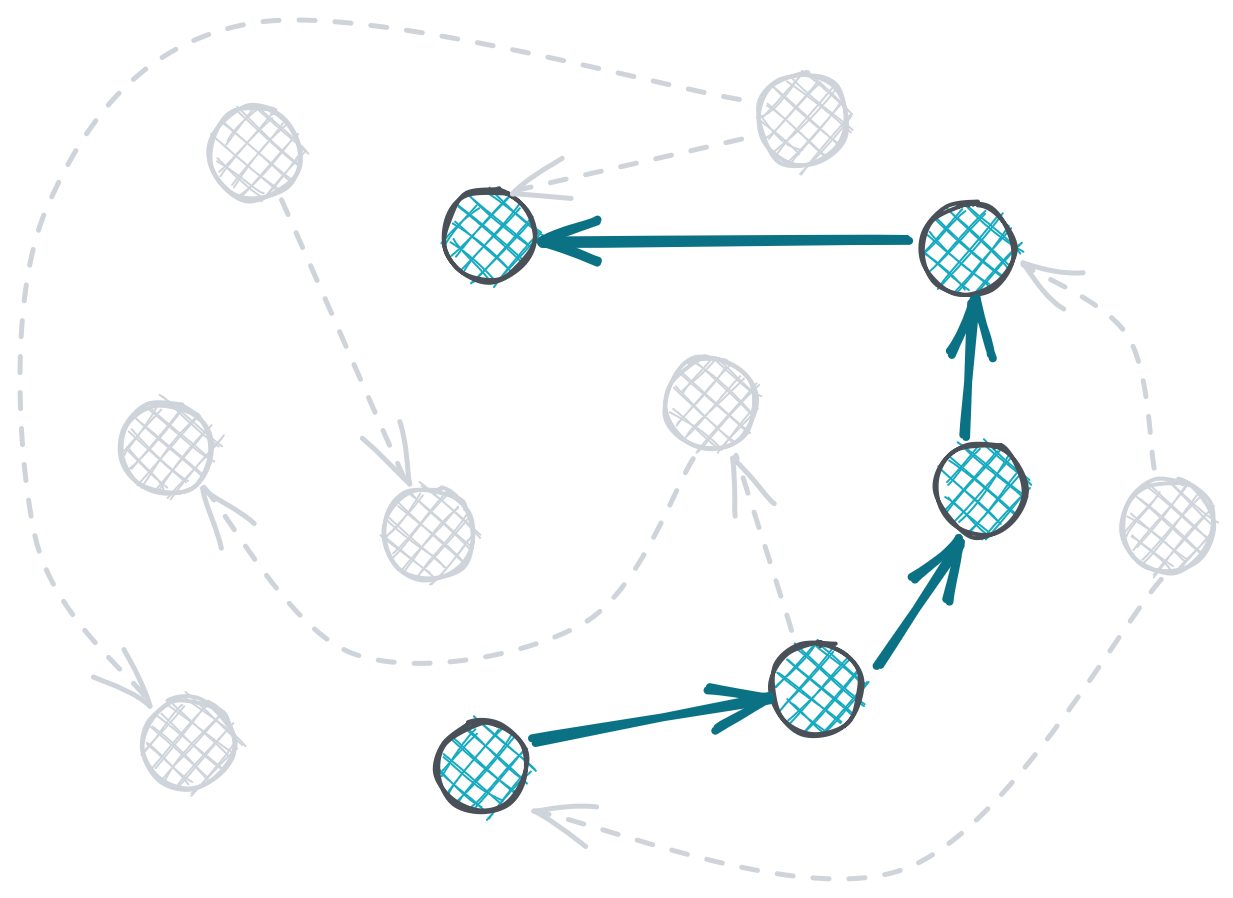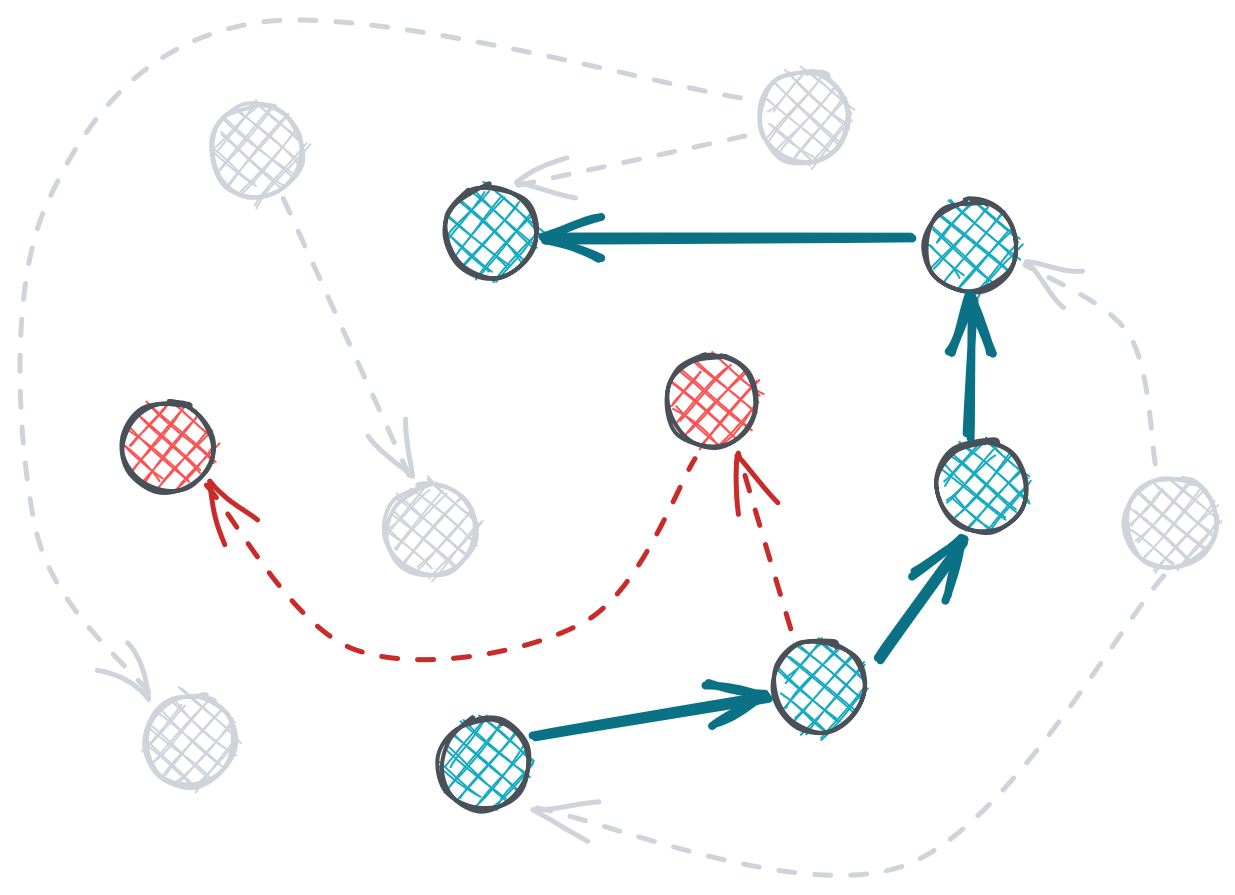Created: 2022-08-25 22:33
One of the pieces that greatly influenced my writing is Alvaro Videla’s Notes on the synthesis of labyrinths. Not that I’m that great of a writer, but still.
No one realized that the book and the labyrinth were one and the same. — Jorge Luis Borges
Writing is linear. One word, phrase, paragraph, and chapter after the other. It’s all in one dimension.
A perfect fit for describing algorithms and instructions like recipes.
However, problem solving, stories, and life in general, aren’t linear. There’s back and forth, attempts that did not succeed, forks in the road that we decided not to take or had to back track to and go into the other direction.
So how does one put that into writing?
Taking something from dimension Nth into dimension Nth+1 is relatively easy, there’s no loss of information. The challenge lies into bringing something from dimension Nth into dimension Nth-1, some information will always be lost in that process.
A very common approach is to only share the successful path, since it’s a single path, it’s easier to adapt it to the linear and chronological nature of writing.
However that ignores a big portion of the process of how we got to the solution or the end of the story. Which in turn might give the impression that there were non other paths taken and thus readers might wonder why those other paths were taken and even question the validity of current solution in light of the other potential ones.
It would be like showing only one path in a graph. The rest of the information is lost.

A much better picture can be painted when including some of those different explorations taken while trying to find the solution.

Explaining why other options didn’t work clarifies why the final solution does work. Writing needn’t be chronological and linear, it can go into different directions to repeat some of the key aspects of the process and digress into clarifying relevant concepts.
